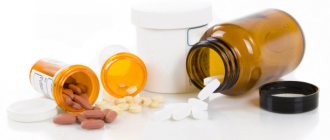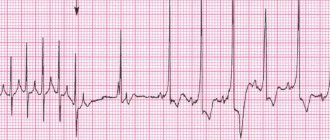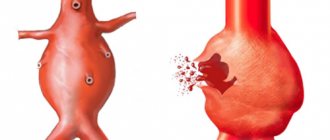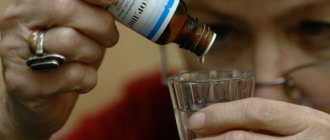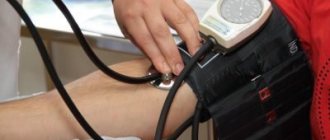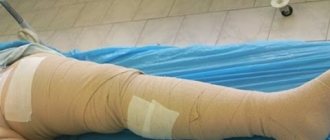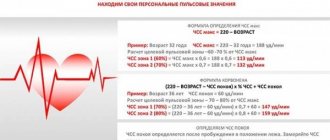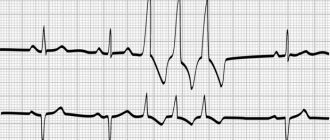What is anesthesia?
Anesthesia or narcosis is a medical method of blocking the centers of the brain responsible for pain. With the help of special blocker drugs, an effect occurs on nerve receptors, as a result of which a person is rendered unconscious or sensitivity in a certain area is blocked for a planned period of time.
With general anesthesia, the goal is to immobilize the patient to avoid accidents during complex procedures. Time and dosage are strictly calculated, since uncontrolled use leads to irreversible changes in the brain, coma or death. Drugs can be delivered to the body intravenously, topically, or through the respiratory system using a mask.
There are cases when the individual characteristics of the body’s recovery are higher than calculated, the patient can wake up right on the operating table. This is not critical, the person does not experience pain and is quickly put back into anesthesia. Such cases occur in 1% of 100%. The use of anesthesia carries with it a number of risks that can lead to death. These are allergic reactions, inadequate response of organs to exposure, overdose. However, such risks are minimal. The possibility of death is 3 times less than death in an airplane or car accident.
Types, causes and symptoms of tachycardia
Tachycardia is very dangerous as it can cause ventricular fibrillation, which can be fatal. Self-medication is not recommended.
Diseases of the nervous system can cause tachycardia at rest. Often cases are recorded in adolescence, especially in girls against the background of vegetative-vascular dystonia. Doctors identify the main diseases that cause heart palpitations:
- hormonal imbalance;
- hemodynamic disorder;
- various forms of arrhythmia;
- hyperthyroidism;
- anemia;
- atherosclerosis.
The typical symptoms are:
- a sharp jump in heart rate;
- decreased blood pressure, which causes dizziness and darkness in the eyes;
- pain in the chest;
- loss of consciousness.
The slightest disturbance in heart rhythm instantly makes itself felt. Palpitations can manifest themselves in different ways. Someone feels painful tremors, someone's heart is pounding and “jumps out” of the chest, for many the heartbeat is accompanied by other symptoms: weakness, sweating, a rush of blood to the face, increased pulsation in the temples.
In a normal state, a person does not feel heartbeats. Their frequency varies depending on the physical condition. In a quiet position, the heart rate does not exceed 60–80 beats per minute.
The normal heart rate depends on a person’s age, his constitution, and weight. Athletes can have a heart rate as low as 40 beats per minute, and this is considered normal.
The effect of anesthesia on the body
Interference with the body's functioning has certain consequences. They can be minimized, but cannot be completely avoided. Possible reactions after anesthesia:
- swelling of the respiratory system causing blockage of oxygen;
- the body's response to a disorientated state in the form of nausea, vomiting, may occur unconsciously during anesthesia;
- changes in heart rhythm due to surges in blood flow pressure;
- cerebral circulatory disorders, swelling;
- changes in breathing rhythm as a result of inflammation of the respiratory tract;
- CNS disorder.
With local anesthesia, a rapid heartbeat also occurs and goes away when the substance is removed from the body. This usually takes from several hours to a day. In this case, rest is required to avoid pressure surges.
Particular attention should be paid to the child's condition. If his heart beats strongly after anesthesia, his level of concentration is reduced, and memory lapses are observed, this means that the functioning of the main organs: the brain and heart is impaired. This condition requires medical intervention. If measures are not taken in time, hyperactivity develops, the child begins to walk on his toes, memory and speed of thinking decrease. The most dangerous period of exposure to anesthesia is before the age of two, since during this period neural connections are just developing. The consequences are clearly visible during the learning period; the child has no desire to learn, since the assimilation of information is associated with significant difficulties in perception.
In adults, the effects of anesthesia are less pronounced. In a healthy person they pass quickly. If any serious pathology of the central nervous system, brain or heart develops in the body, the following consequences are observed:
- insomnia, prolonged sleep;
- rapid heartbeat after anesthesia for 3-4 months;
- loss of strength, rapid fatigue;
- depression, sudden mood swings;
- absent-mindedness, interruption of the chronology of events;
- short period of concentration, difficulty in perceiving information.
Particular attention to your condition after anesthesia should be paid to women who used local or general anesthesia during childbirth. Repeated use of anesthesia throughout life contributes to the development of cardiac pathologies.
The likelihood of a situation where the heart beats strongly after anesthesia increases arithmetically with existing disorders and diseases of the cardiovascular system. Anesthesia is a stress factor that does not change the functioning of the heart on its own, but becomes an impetus for the development of existing diseases. 70% of complaints about palpitations in the subsequent period arise due to exacerbations, and not newly developing abnormalities. This fact cannot be ignored, since a mild form of pathology over the years passes into a stage when the situation can only be corrected through surgery.
Types, causes and symptoms of tachycardia
Many people believe that cough is a symptom of only respiratory diseases, but this is not true. The lungs are closely interconnected with the heart and blood vessels. That is why disturbances in blood circulation can affect the functioning of the respiratory organs, and a person will develop a cardiac cough.
This symptom of many diseases of the cardiovascular system may appear before or because of treatment. A cardiac cough resembles the cough of ordinary bronchitis, but is not accompanied by sputum production.
In severe cases, streaks of blood may appear in the coughed-up contents. As the disease progresses and is left untreated, cardiac cough can lead to the development of cardiac asthma or pulmonary edema.
In this article we will look at the main causes of the appearance, mechanism of development, symptoms and treatment methods for cardiac cough. This knowledge will help you suspect the onset of the disease in time and take the necessary measures to eliminate it, which will prevent the development of serious complications.
Causes
The main cause of cardiac cough is stagnation of blood in the lungs, which occurs when the heart is unable to pump blood normally. Such congestion, which decompresses the activity of the heart, leads to the accumulation of fluid in the lungs, causing irritation of the bronchi and the cough itself.
- arterial hypertension;
- cardiac ischemia;
- myocarditis;
- cardiomyopathy;
- cardiosclerosis;
- heart attack;
- myocardial infarction;
- congenital heart defects;
- acquired lesions of the heart valves (especially the mitral valve);
- arrhythmias;
- aortic lesions (aneurysms, mesaortitis);
- mediastinal diseases.
Also, causes of cardiac cough can be diseases of the endocrine system, alcohol abuse, smoking, severe forms of anemia, taking certain medications for the treatment of cardiovascular pathologies, and frequent and severe stress.
Blood supply to the lungs is provided by the pulmonary circulation, and its effectiveness largely depends on the full functioning of the left ventricle and atrium. The development of cardiac cough goes through several stages. The mechanism of respiratory depression is as follows:
- Pathological processes occurring in the left ventricle cause a decrease in its contractility, and it cannot effectively pump blood coming from the pulmonary arteries to the aorta. Such changes in the functioning of the heart lead to an increase in pressure in the lungs and a slowdown in blood microcirculation.
- Slow blood flow causes increased venous pressure and oxygen starvation of tissues.
- Due to hypoxia, collagen fibers are deposited on the interalveolar septa and walls of small vessels, which cause the development of pneumosclerosis.
- The small vessels of the lungs gradually become sclerotic and completely obliterated (overgrown with connective tissue). Such pathological processes lead to a decrease in blood flow in the lungs and an even greater increase in pressure in the pulmonary vessels.
- Increased pressure in the pulmonary artery leads to increased load on the left ventricle, and it hypertrophies.
- Then dilatation (expansion of the boundaries) of the right half of the heart occurs, which causes stagnation of the systemic circulation. The liquid part of the blood seeps into the lung tissue and irritates the bronchial receptors. The patient develops a cardiac cough, which is chronic, appears when trying to take a horizontal position and worsens in the evening or at night.
- With severe complication of the pathological process in the heart (for example, the development of a new attack of heart attack, arrhythmia, ventricular fibrillation, etc.), acute left ventricular failure develops, and its rapid progression can cause attacks of cardiac asthma or pulmonary edema.
Symptoms
Having collected complete information about the nature of the cough, the doctor determines the tactics for further examination of the patient.
Recovery period
Restoration of heart rate and brain function after anesthesia occurs independently. If local anesthesia was used, the recovery period takes no more than a week. With general anesthesia, it takes from several months to several years. To help the body recover, the following medications are prescribed:
- Improves cerebral circulation: Vinpocetine, glycine, etc.
- Supports the condition of the heart muscles: potassium magnesium.
- Supporting the condition of blood vessels: Ascorutin, etc.
- Calming: Persen, Novopassit, Valerian, etc.
The list of prescriptions depends on the person’s condition and the results of the examination. During the recovery period, the day should be balanced. Sudden movements, overexertion, and severe physical fatigue should be avoided. Daily walking helps a lot. To improve brain function, special exercises are used that stimulate brain activity.
The functioning of the brain directly depends on the functioning of the heart. If tachycardia, arrhythmia or other disruptions bother you for a long time, you should pay attention to this and undergo an examination. A specialist will help restore the body’s functioning and avoid consequences that require drastic measures of intervention.
Source: serdechnic.com
Surgery for paroxysmal tachycardia is not so scary
Since I was 28 years old I have had paroxysmal tachycardia. Now I am over 50. They suggested surgery - radiofrequency ablation. What kind of operation is this, how is it done, in what cases, and what could be the consequences? I ask a specialist to answer. After all, such a disease is not uncommon!
You are right, recently many readers have asked questions about heart rhythm disturbances. So let's first figure out how a healthy heart should contract.
Let us remember that the heart has 4 chambers: 2 atria and 2 ventricles. In healthy people, they contract rhythmically, that is, regularly and at equal intervals. Resting heart rate is 60 to 90 beats per minute. And with physical or emotional stress, the number of beats per minute may increase. Arrhythmia is a condition in which one or both of the main characteristics of a normal rhythm—regularity and frequency—are disrupted. How do such violations manifest themselves and why are they dangerous?
Read also: Tachycardia risks
The most typical manifestations are sensations of interruptions in the functioning of the heart. For example, pauses between contractions or extraordinary contractions. There are attacks (paroxysms) of rapid heartbeat that occur suddenly. Sometimes you can understand their cause: fear or excitement, physical activity or elevated body temperature. But most often such attacks occur at rest. Paroxysm can last from several minutes to several hours and even days. A prolonged attack is dangerous. Especially if it is accompanied by fainting, dizziness or a feeling of clouding of consciousness. The longer the paroxysm, the faster complications arise, because there is an excessive load on the heart muscle. If this happens to you, you should urgently consult a doctor and get examined! The doctor will prescribe medicine.
If the attacks do not stop, their frequency and duration increase, then minimally invasive methods are used to eliminate their causes. This is not open heart surgery, but rather treatment using electrical impulses, cold (cryoablation), laser or radiofrequency. In such cases, catheters are used - diagnostic and therapeutic. They are usually administered through the femoral or subclavian vein. Using a diagnostic catheter and a computer, an accurate diagnosis of the tachycardia zone is carried out. Then, using a therapeutic catheter, this area is affected.
Radiofrequency ablation, which the doctor suggested to you, is used for atrial fibrillation or fibrillation, supraventricular tachycardia, as well as some types of ventricular tachycardia. There are also relative contraindications: chronic renal or heart failure; allergy to contrast agents used in this method and iodine intolerance; uncontrolled blood pressure; anemia and severe bleeding disorders (coagulopathy). Acute infections, fever, pulmonary edema, and excess medications are also considered contraindications.
The word “ablation” can be intimidating because it means “removal” in Latin. But in such cases, doctors do not remove anything, but cauterize it. What exactly? Let us remember: the heart must have a measured rhythm, which is supported by its own electrical conduction system. The system includes an electrical impulse generator (the main pacemaker) and conductive pathways connecting the entire electrical chain. But suddenly a new source of electrical impulse appears in the heart muscle, which knocks the heart out of its natural rhythm. This is a tiny area in the muscle that is burned during surgery. Then many patients no longer have to treat the arrhythmia. There is practically no pain, and recovery is fast. There are no stitches and no scars remain. After 2-3 days the patient is already discharged.
The same method is used to install an artificial pacemaker for bradycardia. In addition to cardiac surgery, ablation is also used in gynecology, oncology, and otolaryngology. So, if you have no contraindications, there is nothing to be afraid of.
Naturotherapist G.G. Garkusha
What is aortic stenosis?
Aortic stenosis is a narrowing of the aorta, the largest artery that connects to the left ventricle of the heart, through which oxygenated blood flows to supply the body with oxygen and nutrients. The most common cause of aortic stenosis is congenital—the defect is already present at birth. However, rheumatic fever can also cause aortic stenosis, and aging is associated with. ⇒
How to keep your heart healthy?
Although health ministers are trying to convince us that in a few years we will forget about cardiovascular diseases, this is hard to believe. Why? Yes, because half of the country's population has cholesterol levels that exceed normal levels - these are middle-aged people. And for those who are in favor. ⇒
Antihypertensive and antiarrhythmic drugs in the treatment of cardiovascular diseases
Those drugs that affect the blood itself, the blood vessels and heart muscle, can also be used to treat cardiovascular diseases. These drugs change heart rate and blood pressure, the pumping function of the heart, and blood clotting and flow. Antihypertensive drugs and medications Antihypertensive drugs are used to treat high blood pressure. (hypertension). Their. ⇒
Why does the heart beat strongly after anesthesia?
If your heart beats strongly after anesthesia, there may be several reasons for this. Surgical interventions are dangerous not only because they cause stress to the body, but also because of the use of anesthesia. Both local anesthesia and general anesthesia can affect the patient's health in different ways, especially if he is already predisposed to certain side effects.
How well the patient will tolerate anesthesia depends on a number of factors: age, presence of bad habits and addictions, gender, general health. The presence of pathologies and chronic diseases. Anesthesia can affect the nervous system, brain function, and the functioning of the cardiovascular system.
What is tachycardia?
If a patient's heart beats rapidly after anesthesia, this is a sign of anesthesia-induced tachycardia. The feeling when a person's heart begins to beat too fast or too fast is called tachycardia. Tachycardia is a rapid contraction of the heart muscle. Why is this condition dangerous?
Contractions that are too fast prevent the heart from working efficiently. The ventricles do not have time to collect the required amount of blood, so the pressure drops. All tissues and organs receive less blood, and therefore less oxygen. As a result, oxygen starvation develops. The brain will suffer the most from oxygen starvation, although other organs will begin to function poorly.
Causes of tachycardia after anesthesia
Post-operative tachycardia can be caused not only by the anesthesia itself, but also by other factors, and much more often by a combination of them.
Causes of tachycardia after surgery may include:
- Emotional reasons - the patient is worried before the operation, experiences disorientation after anesthesia.
- Blood loss - any surgical intervention is associated with the inevitable loss of some amount of blood.
- Shock – surgery results in shock to the body.
If the heart beats strongly after anesthesia, several reasons can also be identified among those caused by the medication:
- Oxygen starvation.
- Bronchospasms.
- Breathing disorders during surgery.
- Ventricular fibrillation.
The combination of these factors only increases the risk of developing tachycardia. That is why after anesthesia the patient must be under strict medical supervision.
Increased heart rate after surgery
Surgery for tachycardia is mandatory for many reasons. As a pathological manifestation, it is caused by a variety of diseases of the autonomic nervous system and some types of arrhythmia.
If drug treatment is ineffective, surgery can eliminate the cause of tachycardia or reduce the risk of developing repeated attacks of rapid heartbeat.
Elimination of the pathological focus is carried out without general anesthesia. Through a small puncture of the skin, a catheter is inserted through a vein up to the heart chamber with the source of the disease. The actions are monitored through an X-ray machine.
After identifying the affected area, cauterization is performed with high-frequency current. After the destruction of the source of the disease, the normal rhythm is restored. After the operation, special medications are prescribed, and the patient is under observation for some time.
Implantation of an artificial pacemaker for tachycardia involves attaching a small device (pacemaker). The device is placed in the heart and carried out using a catheter through the lateral vein of the arm.
Such devices prevent attacks; when an arrhythmia begins, an electrical impulse is emitted that suppresses the attack. When a pacemaker is installed, the patient should visit the doctor frequently to ensure that the pacemaker is working properly.
Open surgery
The intervention is performed under general anesthesia and when the patient undergoing surgery is transferred to artificial circulation. Open heart surgery is performed with cutting and removal of damaged arrhythmic areas.
Copying site materials is possible without prior approval if you install an active indexed link to our site.
The information on the site is provided for general information purposes only. We recommend that you consult your doctor for further advice and treatment.
Anonymous, Woman, One year
2.0) such states last from several minutes to several hours. At this time, he has a strong urge to go to the toilet, his arms and legs are damp, and sometimes he shakes. Sometimes it goes away on its own, sometimes I take anaprilin. Often occurs after breakfast.
The thyroid gland is normal. I lead a healthy lifestyle: I try to eat well and properly, I don’t drink, I don’t smoke, I exercise. Height 158, weight 44 (but I think I’ve gained weight now :) I called an ambulance when my pulse was elevated, when the ambulance arrived (after 40 minutes or an hour) the pulse had already dropped on its own.
My cardiac surgeon says that the operation went well and it cannot be SVC syndrome, that the heart gets used to it. Soon it will be 3 months since the operation was performed, it takes a while to get used to it. I attached the results of the cardiogram from the ambulance (they did it with an old cardiograph and the suction cups kept coming off) and the latest cardiogram from the hospital where the operation was performed.
Indeed, sinus tachycardia sometimes occurs after RFA surgery, no big deal. First of all, I would make sure that there is no anemia (it is worth doing a general blood test). However, most likely you are describing a manifestation of a neurotic disorder. Talk to a therapist about your symptoms.
Thank you very much! Before the operation, I took a general blood test. Everything was OK. I'll rent it again just in case. What causes neurotic disorders? I don’t seem to be nervous and at the moment of tachycardia I am calm, like a boa constrictor. How long can tachycardia last after surgery? Is it worth installing a halter? Thank you!
Neurotic disorders and not being nervous are slightly different things. Make a halter, of course. This is a completely harmless procedure. Sometimes it allows you to dispel some of the unfounded fears.
Consultation is provided for informational purposes only. Based on the results of the consultation received, please consult a doctor.
Forum about heart and vascular diseases
coronary heart disease, post-infarction cardiosclerosis, coronary artery bypass grafting, cardioverter-defibrillator, radiofrequency catheter ablation, ventricular tachycardia, left ventricular aneurysm
We present a case of elimination of ventricular tachycardia around a postoperative scar in a 55-year-old patient with coronary heart disease and post-infarction cardiosclerosis, who underwent coronary artery bypass surgery and Dor repair of a left ventricular aneurysm with subsequent implantation of a cardioverter-defibrillator.
A cardiac aneurysm was first described at the end of the 15th century. V. J. Hunter and D. Geleati (1757). In 1914, M. Sternberg described the relationship between cardiac aneurysm and damage to the coronary arteries and myocardial infarction, and D. Cooley was the first to perform aneurysm resection under artificial circulation in 1958.
In 85% of cases, the aneurysm is located along the anterior, anterolateral wall of the left ventricle (LV) or in the region of its apex. This dominant localization of the aneurysm corresponds to the frequency of atherosclerotic lesions and thrombosis of the anterior interventricular branch of the left coronary artery [2].
The main task of surgical treatment is not only excision of the aneurysm, but also revascularization of the myocardium, therefore, the indications for coronary artery bypass surgery for post-infarction aneurysm coincide with those for chronic coronary heart disease (CHD).
In the surgical treatment of post-infarction aneurysms, a huge contribution was made by V. Dor (1990), who attaches great importance to the removal of the scarred interventricular septum from the LV cavity when suturing a patch, as well as bypassing the anterior interventricular branch for the purpose of revascularization of the proximal parts of the interventricular septum and conduction system [3].
Subsequently, he developed a technique in which a detached fibrous-modified part of the interventricular septum is used as a patch. In this case, the mouth of the aneurysmal sac is reduced by applying two half-purse string sutures according to the Zhatane technique.
Rhythm disturbances in the presence of post-infarction aneurysm occur both before and after surgery. They manifest themselves in the form of ventricular extrasystole, attacks of paroxysmal ventricular tachycardia and ventricular fibrillation.
The basis of paroxysmal ventricular tachycardia, which can then turn into ventricular fibrillation, is the re-entry mechanism. The re-entry zone, according to catheterization and intraoperative mapping, in 80% of cases is located in the subendocardial part at the border of the scar and viable myocardium [4].
The case we present demonstrates the elimination of ventricular tachycardia around a postoperative scar using radiofrequency ablation using the CARTO non-fluoroscopic mapping system in a patient who underwent coronary artery bypass surgery and repair of an LV aneurysm according to Dor.
Patient S., 55 years old, was admitted to the department with complaints of rapid, rhythmic heartbeat, accompanied by weakness and faintness. He suffered acute myocardial infarction twice (1996 and 2008).
During examination at the Scientific Center for Cardiovascular Surgery named after. A.N. Bakulev revealed stenosis of the coronary arteries: anterior interventricular branch - posterior third 80%, diagonal branch - 70%, as well as an aneurysm of the LV apex and lower third of the interventricular septum.
In April 2009, coronary bypass surgery was performed: mama-coronary bypass - 1 bypass (anterior interventricular branch - left thoracic artery), coronary artery bypass grafting - 1 bypass (diagonal vein - autovenous), resection of post-infarction aneurysm with Douroplasty under conditions of artificial circulation and pharmacological - cold cardioplegia.
In the postoperative period, ventricular extrasystole and ventricular tachycardia (VT) occurred with a ventricular rate of 150 per minute. The patient received cordarone, but due to episodes of VT, a single-chamber cardioverter-defibrillator (ICD) was implanted at the same time.
He was admitted to the department of surgical treatment of tachyarrhythmias at the Scientific Center for Cardiovascular Surgery named after. A.N. Bakulev for radiofrequency ablation (RFA) of ventricular tachycardia. During the ECG examination, sinus rhythm was recorded with a frequency of 60 beats/min.
Echocardiographic examination: thickness of the interventricular septum in diastole - 0.7 cm, dyskinesis; thickness of the posterior wall of the LV (in diastole) - 0.8 cm; LV end-systolic size - 5.8 cm, LV end-diastolic size - 7.1 cm, LV end-diastolic volume, LV end-systolic volume, stroke volume, ejection fraction (Teicholtz) - 35%;
left atrium - 4.2 cm, mitral valve - thin leaflets, diameter of the fibrous ring 3.1 cm, degree of regurgitation 1; the aortic valve is tricuspid, the diameter of the fibrous ring is 2.6 cm; the right atrium is not enlarged; tricuspid valve - thin valves; the interatrial septum is intact.
Diagnosis: IHD. Post-infarction cardiosclerosis. LV aneurysm. Condition after coronary artery bypass surgery on a beating heart, resection of post-infarction LV aneurysm with Douroplasty under conditions of artificial circulation and pharmaco-cold cardioplegia.
In June 2009, an electrophysiological study and RFA procedure were performed. The patient was delivered to the cath lab in sinus rhythm (ICD set to VVI mode 50 beats/min) with heart rate/min. Under combined anesthesia using the Seldinger technique, the left subclavian and femoral veins were punctured.
Electrodes were placed: 10-pole - into the coronary sinus and 20-pole into the apex of the right ventricle. Electrophysiological studies were carried out on a 64-channel Prucka Cardiolab 4.0 complex (General Electric, USA).
Consequences and treatment of tachycardia after anesthesia
Although tachycardia itself may be a consequence of anesthesia, it can also lead to other side effects. Complications that may occur in the first few days after surgery include:
- Frequent pulse.
- Chest pain.
- Short-term hypertension.
- Brain spasms.
- Anxiety.
- Dizziness.
To prevent the development of complications, it is recommended to take drugs that restore the functioning of the nervous and cardiovascular systems, such as Piracetam and Cavinton. It is also extremely important to monitor the patient’s condition by measuring blood pressure and heart rate, and a cardiogram.
To overcome feelings of panic and psychological discomfort, the patient is recommended to consult a psychotherapist and take sedatives. You can also visit a psychotherapist before surgery - this will reduce stress and reduce the likelihood of developing tachycardia after anesthesia.
Source: vserdtse.com
Tachycardia
Total messages: 28 Registered: June 22, 15:39 User rating: 0
September 26, 18:05#1
My sister had an operation to remove an ASD in July, now she is still on sick leave, the doctor scares us because her pulse is very high. Has anyone encountered such a problem? She was prescribed Concor; she is afraid to drink it, they say it will last her life. P
Total messages: 83 Registered: Mar 7, 13:39 From: St. Petersburg User rating: 0
September 26, 18:20#2
Tatiana! I have the same problem! They said that in six months everything would be normal, but for me it only got worse. I recently went to Bakuleva about this, they stopped my old pills and prescribed new ones, and they also told me to do something to understand the reasons, now I’m going to the doctors again. What treatment were you prescribed for tachycardia? What is your resting pulse without pills (mine is 96-100).
Total messages: 83 Registered: Mar 7, 13:39 From: St. Petersburg User rating: 0
September 26, 18:21#3
And Concor was canceled for me, the arrhythmologist said that Concor only aggravates the situation, like maybe because of it my tachycardia does not go away.
Total messages: 83 Registered: Mar 7, 13:39 From: St. Petersburg User rating: 0
September 26, 18:35#4
The biggest problem with Concor is this. It was prescribed to me back in December 2010. First 1/4 of 2.5 mg. Before the operation I drank this way. In the hospital after the operation, they confirmed this dose to me and told me to drink until my pulse returns to normal. The result from Concor was so-so, the pulse was 75, but more often 80-90. Moreover, after physical exercise, he himself did not calm down (as it should be within 20 minutes to return to normal). In general, the dose was increased 2 times (1.25 mg). At first the effect was good, but gradually began to decline - again it returned to the same 80-90. Again (in July) they increased it 2 times (to 2.5 mg). And then a new problem appeared - the pressure was 80/50 in the morning. They divided it into 2 doses, but to no avail. The cardiologist says - be patient, you need to reduce your pulse, it’s not so important. I endured it for 1.5 months, after which I went to Bakuleva for a consultation. It was there that they told me that Concor should not be taken under any circumstances, they said that the causes of tachycardia could be not only in cardiology, and they told me what to do. Have you seen anyone else besides the cardiologist? I mean, first of all, the endocrinologist and neurologist - very often the legs of tachycardia grow from there.
Read also: Mr. Sytin tachycardia
Total messages: 28 Registered: June 22, 15:39 User rating: 0
Types of anesthesia
Anesthesia is characterized by an artificial, temporary and reversible shutdown of human consciousness. Anesthesia is used:
- for euthanasia of a person with complete loss of sensitivity and consciousness - general;
- for the absence of pain sensitivity in a specific organ - local.
Based on the principle of narcotic effects on the body, there are several types of anesthesia. Their operating principle and advantages are outlined in the table:
| View | Operating principle | Drugs | Advantages |
| Inhalation | Lung tissue actively absorbs ethereal vapors. When drugs are inhaled, their concentration in the blood is high. Moving through the vessels, they affect neurons and plunge the patient into a narcotic sleep. | "Ether"; "Etran"; "Trilene" | Easy to perform, short-term effect |
| Non-inhalation | Drugs are administered intravenously | "Fentanyl" with "Sibazon" or "Droperidol"; "Thiopental"; "Recofol" | Has a long-lasting and deep effect |
| Multicomponent endotracheal anesthesia | Intravenous administration of drugs is combined with tracheal intubation | "Thiopental"; "Ditilin"; "Ardoin" | Deep anesthesia for operations on the thoracic and abdominal organs. Provides complete pain relief and muscle relaxation. |
The main requirement for anesthesia is individualization, i.e., for each patient, the drug and exposure time that suits the state of health are selected.
Indications and contraindications
Indications for the use of local or general anesthesia are operations:
- internal organs;
- neurosurgical;
- dental;
- for injuries;
- childbirth and abortion;
- plastic.
The main contraindications to the use of anesthesia are:
- heart failure;
- asthma;
- dysfunction of the liver, kidneys;
- infectious blood poisoning by pathogenic microbes;
- allergic reactions to narcotic analgesics.
Return to contents
Anesthesia for palpitations
An anesthesiologist prepares the patient for anesthesia and surgery. Before the operation, the anesthesiologist examines the patient, studies the medical history, determines chronic diseases, allergic reactions to medications. Particular attention is paid to cardiac pathologies: methods of combating them, their symptoms and duration, and the effect of treatment. The doctor assesses the psychological state of the patient, since nervous experiences contribute to an increase in heart rate and disrupt the functioning of the heart. In case of tachycardia, the patient is examined by a cardiologist and an anesthesiologist. Only after diagnosis is a decision made about the safety of anesthesia. There are no contraindications to the use of anesthesia for tachycardia, but increased control over the work of the heart during and after surgery is important.
Tachycardia during and after anesthesia
Anesthetics during surgery can cause an attack of tachycardia. Causes of increased heart rate include:
- bronchospasm and respiratory failure;
- oxygen starvation;
- ventricular fibrillation.
In case of tachycardia during surgery, constant electrocardiographic monitoring is required.
Within a few days after anesthesia, a patient with tachycardia may experience the following complications:
- dizziness;
- brain spasms;
- daily panic attacks;
- high blood pressure;
- heart pain;
- rapid pulse.
To prevent complications after anesthesia, it is recommended to take the drugs Cavinton and Piracetam, which help restore the functioning of the brain and cardiovascular system. It is important to regularly do a cardiogram, monitor the heartbeat and the functioning of the vascular system. To overcome panic and feelings of fear, sedatives and consultations with a psychotherapist are indicated.
Source: etodavlenie.ru
Causes and treatment of rapid heartbeat, what to take
From this article you will learn: why a rapid heartbeat (or heart rate - abbreviated heart rate) can occur, and whether it is dangerous.
How is it treated, and is it always required? A pulse rate of 90 beats per minute (in adults) is considered rapid. In newborns, heart rate should not exceed 150 beats per minute. In children under 10–12 years old – up to 120–130. In teenagers - up to 110 beats per minute.
The causes of heart palpitations can be different, and they are not always associated with heart disease. In some cases, a high heart rate may be normal and nothing needs to be done - but in most cases treatment is still required.
In itself, a rapid pulse is not an independent disease, but a symptom of other disorders in the body. They are treated by doctors such as a cardiologist, arrhythmologist, cardiac surgeon, endocrinologist, nutritionist, sports doctor, neurologist, and psychotherapist.
If you have an increased heart rate, consult your doctor first.
Heart rate detection
Anesthesia and tachycardia
Surgical treatment is performed under anesthesia. It may contain up to 15 drugs that have a greater or lesser effect on blood pressure. The use of drugs containing narcotic analgesics in medicine has a strong effect on the central nervous system and also causes heart disease. Tachycardia and anesthesia, when combined, can cause a lot of unpleasant consequences, but the anesthesiologist must make efforts to prevent complications. There are no categorical contraindications for the use of anesthesia for tachycardia.
To one degree or another, anesthetics affect the functioning of the cardiovascular system and inhibit its functions. But thanks to the effect on compensatory mechanisms, the suppressive effect does not have dangerous side complications. But there is both tachycardia and a drop in blood pressure after general anesthesia.
How does anesthesia affect the heartbeat?
General anesthesia and all its components negatively affect the functioning of the cardiovascular system. The strength and level of impact depends on the drug used. The supply of anesthetic through a mask in gaseous form or through intravenous injection complicates the work of the myocardium. The speed at which a person falls into artificial sleep depends on the amount of anesthesia used. During complex operations, the drug is administered through a dropper. If a person already has pathologies before the procedure (especially asthma, arrhythmia), then the doctor is obliged to do a full examination and select the type of anesthesia individually.
Consequences of using artificial sleep:
- pain in the chest area;
- changes in heart rate;
- the chest begins to burn or pound;
- feeling of constriction in the heart.
If a person has kidney problems, then this type of pain relief is contraindicated for him.
Contraindications to the use of anesthesia include the following symptoms:
- dyspnea;
- impairment of kidney and liver function;
- allergy to anesthetic;
- heart failure.
Return to contents
Is general anesthesia allowed for tachycardia?
The anesthesiologist prepares the patient for artificial sleep. During the period before the procedure, doctors examine the patient, study diseases, and allergic reactions to medications. The following factors are especially carefully studied:
- pathologies of the heart and blood vessels;
- features of previous treatment regimens;
- the effectiveness of certain drugs;
- psychological characteristics of a person.
Return to contents
Risks before and after artificial sleep
General anesthesia during use may cause an attack of tachycardia. Reasons for increased heart rate include:
- breathing rhythm disturbances;
- lack of oxygen;
- bronchospasms.
In the postoperative period, a person may experience panic attacks.
In some patients with tachycardia in the postoperative period, the following consequences are possible:
- spasms;
- heartache;
- blood pressure surges;
- increased heart rate;
- attacks of panic and anxiety;
- dizziness;
- fainting.
To minimize complications after the introduction of general anesthesia, you need to regularly do a cardiogram to monitor the level of heartbeat and the proper functioning of blood vessels.
To relieve panic attacks, sedatives and work with a psychotherapist are prescribed. Recommended medications include the following medications, which are presented in the table:
| A drug | Action | Indications | Contraindications |
| "Cavinton" | Restoring brain function | Neurological diseases | Hemorrhagic stroke |
| Stimulation of amino acid inhibition | Arterial thrombosis | Pregnancy | |
| "Piracetam" | Stabilization of the cardiovascular system | Atherosclerosis of the brain | Acute renal failure |
| Increasing the resistance of the central nervous system to hypoxia and toxic factors | Vascular parkinsonism | Diabetes |
Source: vsedavlenie.ru
Effects of anesthesia on the cardiovascular system
If arrhythmia is diagnosed, the risk of administering anesthesia before surgery doubles. If surgery is urgent and urgent, the doctor is obliged to take all necessary measures: prepare the patient, collect data on his diagnosis, and assess the risk of complications.
After this, anesthesia is administered using certain drugs. After the operation is completed, the patient undergoes a rehabilitation period.
Before performing surgery, all the necessary tests are taken from a patient with arrhythmia and a number of studies are carried out:
- Electrocardiogram of the heart. Detection of pathological changes on the ECG directly affects the choice of drug. Atrial fibrillation is one of the most important indicators for this study, influencing the final decision of the anesthesiologist.
- Analysis for blood group and Rh factor. Data is required in case of unforeseen circumstances for donation.
- General and chemical blood test. During the study, the level of protein, bilirubin, cholesterol and other indicators is determined.
- Coagulogram. A blood clotting test will help avoid complications due to blood loss.
- Chest X-ray. The study allows us to exclude tuberculosis and the development of lung pathologies.
Preparing a patient with arrhythmia for surgery also includes completely quitting smoking and alcohol, undergoing a course of treatment for chronic diseases and normalizing weight.
In addition, premedication is carried out - drug preparation for the intervention.
Before administering the drug, the doctor must talk with the patient to find out if he has any contraindications to a particular anesthetic drug. During this conversation, as well as on the basis of the collected data, the anesthesiologist finally decides on the choice of drug and type of anesthesia.
The introduction goes like this:
- anesthesia is introduced into the patient’s body using a catheter, sometimes an inhalation mask is used instead;
- throughout the operation, anesthesia enters the bloodstream, providing the patient with sound sleep;
- in case of arrhythmia, the patient is given special medications before surgery to normalize heart function and stabilize blood pressure;
- Doctors carefully monitor all indicators of heart function during surgery.
Depending on the type of anesthesia, different drugs will be used:
- General anesthesia. When performing short-term operations on patients with arrhythmia, monoanesthesia is used, which involves the administration of one drug. Doctors often use Ketamine. Also for patients with arrhythmia, a 1% solution of Hexenal and sodium thiopental are used. To prevent bradycardia, atropine is additionally administered.
- Local anesthesia. During simple surgical interventions (for example, in dentistry), topical anesthesia is used with the administration of the drugs “Lidocaine” and “Kamistad”. In maxillofacial surgery, Novocain is used, and when administering local anesthesia, Trimecain is often used. During childbirth, as well as operations on the legs or spine, epidural and spinal anesthesia are used. In this case, the drugs Mepivacaine and Ropivacaine are used.
To prevent the effects of anesthesia, if unpleasant symptoms appear after surgery (dizziness, a feeling of heaviness in the heart), you should immediately consult a doctor. Only an intraanesthesia complication can affect the functioning of the heart: disruption of the rhythm of breathing and blood supply during the operation.
During the rehabilitation period, you should adhere to the following rules:
- normalization of sleep patterns;
- sufficient rest;
- walks in the open air;
- healthy eating.
Anesthesia for arrhythmia is not contraindicated, but requires special attention from the anesthesiologist in selecting the drug, taking into account the type and severity of the pathology. By following the recommendations of doctors, you can significantly prevent complications after using anesthesia with a history of arrhythmia.
Diagnosed arrhythmia becomes more dangerous when the patient undergoes surgery. Anesthesia for disturbances in the functioning of the myocardium, especially general, is an extremely undesirable event.
If heart pathologies are diagnosed and it is impossible to do without surgery, then the risk of complications increases several times. Its level is determined using special indices aimed at assessing the likelihood of complications. The indices include:
- The presence of an early or late post-infarction period.
- Diagnosed ischemia or angina.
- Problems associated with heart rhythm disturbances.
- Blood pressure, both high and low, also has a negative effect.
- Diagnosed heart defect, regardless of whether it has been operated on or not.
- Age-related changes and diseases of other parts of the body.
For each item, the doctor assigns points to the patient’s condition corresponding to the severity and severity of the factor. The possibility of complications both during the surgical intervention itself and after it depends on the amount received. In case of low risk indicators, anesthesia is prescribed in accordance with how complex the operation should be.
If a sinus type of disease is diagnosed, then the patient will be placed on the operating table only after a full diagnostic examination and a verdict from the anesthesiologist. In each case, the type of anesthesia is selected strictly individually.
Sometimes the administration of anesthesia can cause a patient with heart problems to stop breathing right during the operation. In this case, prompt resuscitation measures are carried out. If it is possible to restore sinus rhythm, but spontaneous breathing is not restored, the patient is intubated and transferred to an artificial respiration apparatus. With a positive outcome, the patient eventually begins to breathe on his own; in case of relapses, death may occur.
Another serious complication is pulmonary edema, which occurs against the background of heart disease. In the early stages, it can be identified by the appearance of cough and moist rales. Subsequently, deterioration is possible, leading to shortness of breath, cyanosis, and the release of foamy pink sputum. From the very first signs of pulmonary edema, it is necessary to promptly administer drug therapy to prevent the patient’s condition from worsening.
